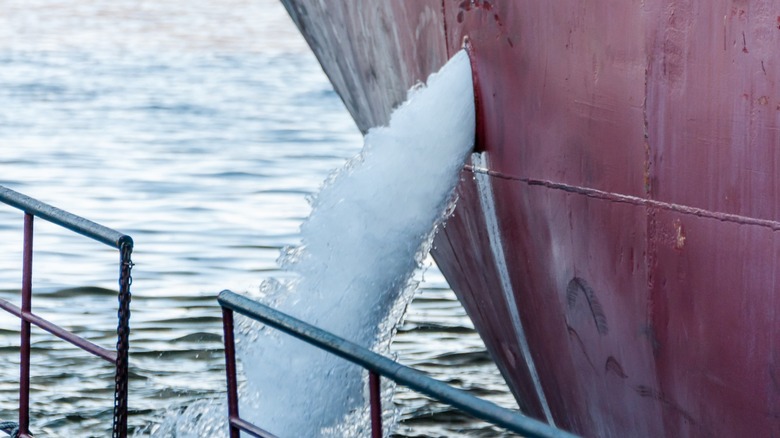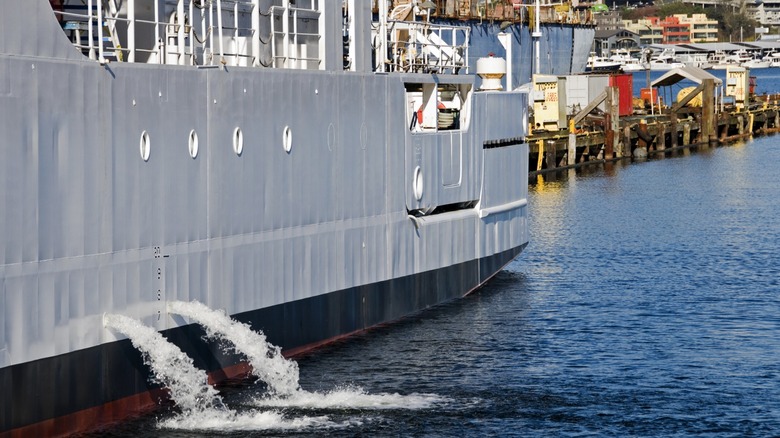What Is Ballast And Why Do Ships Need It?
Through a lot of expensive and dangerous trial-and-error over multiple centuries — sometimes resulting in shipwrecks you still can explore today — humans have pretty much perfected the art of making ships. For a ship to be a good one, it must be able to stay afloat effectively in pretty much any naturally occurring sea condition. It must also remain stable enough to carry cargo and passengers without tipping, swaying uncontrollably, or becoming impossible to steer. One of the most essential and invisible factors that makes this possible is ballast.
At the core of it, ballast simply refers to weight added to a ship to stabilize it. Without ballast, a vessel might float too high, making it dangerously top-heavy or unable to cut through waves efficiently. The ballast's job is to bring the ship's center of gravity lower and adjust its buoyancy so that it sits just right in the water without rolling or pitching excessively.
Back in the early days of seafaring, ballasts could be as simple as rocks or sand packed into the ship's bottom when there was not enough load. Today, most large vessels use water ballast. They work by pumping seawater into internal ballast tanks because it can be easily added or discharged depending on the ship's current load and balance needs. It's pretty much the same method modern submarines use to rise and sink while at sea. With ships, though, it's less about weight and more about balance.
How does ballast work?
Different sea vessels need different ballast systems, depending on their size, purpose, and design. For example, a racing yacht and a container ship rely on entirely different approaches, even though both use ballast to stay stable. A nifty sailboat or a racing yacht would likely use what's called a "solid ballast," made of dense materials like lead, iron, or perhaps concrete. These materials are often placed in the lowest part of the hull, usually the keel. Thanks to this weight, the vessel's center of gravity will be lower, and it can resist tipping forces from wind and waves. This type of ballast could be fixed — meaning it stays in one place and is not designed to be moved — or it could have systems that shift solid ballast side to side as the need arises, like in a canting keel in racing yachts. It's usually reliable and relatively maintenance-free.
However, large commercial ships, like tankers or container ships carrying thousands of containers, usually use water ballast systems. These have pumps and dedicated tanks that take in or discharge water as needed. For instance, when a container ship is unloaded, the system pumps in water to keep it low and stable, but when cargo is added, that water is discharged. This system offers more flexibility than fixed solid ballast, but it's also more complex, relying on pumps, valves, tanks, and sensors to function properly. It also carries significant environmental responsibilities. Ballast water can transport invasive marine species between ecosystems, so modern ships must comply with strict international regulations to treat or manage ballast water before releasing it into the sea.

